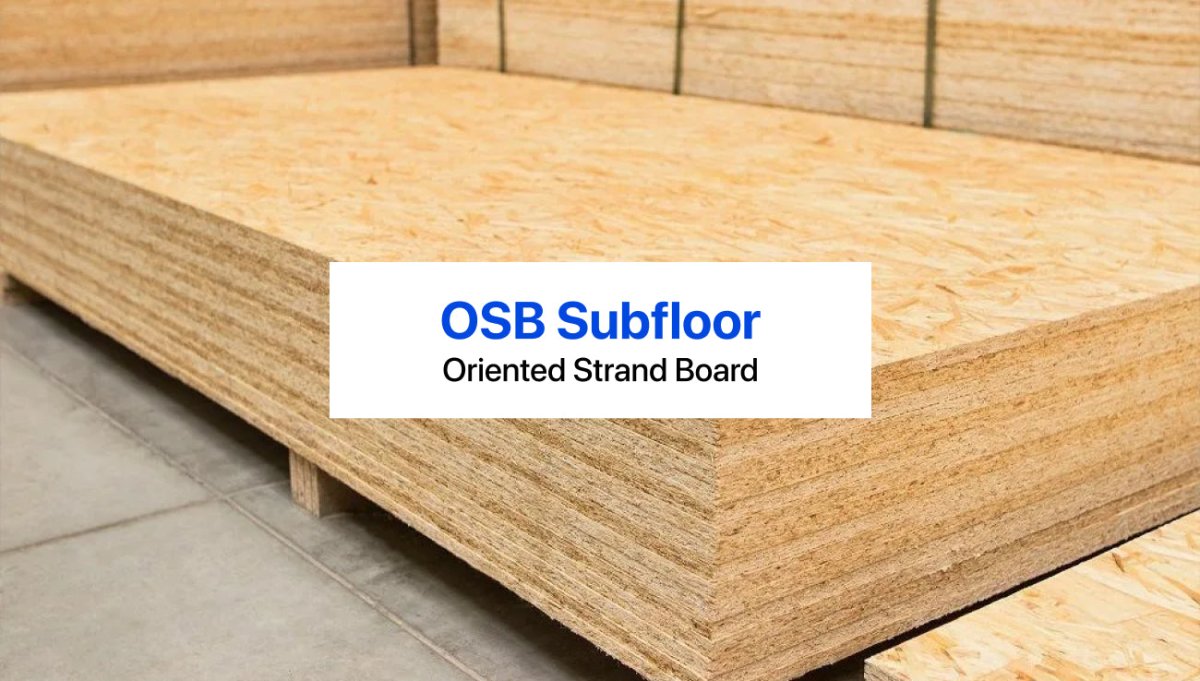When organizing a flooring project, the obvious options—such as hardwood, tile, or carpet—are frequently the main emphasis. However, the lifetime and comfort of your flooring are significantly influenced by what is behind these layers. OSB subfloor offers a reliable, inexpensive, and strong foundation that is deserving of attention. This article explains why OSB subflooring might be the ideal choice for you if you're looking for a durable floor.
What is the OSB Subfloor
Oriented Strand Board, or OSB, is a durable board that is frequently used in the construction of furniture and homes. To create a sturdy board, wood pieces are combined with adhesive and heated to pressure them all together. Builders choose to use it for flooring and walls since it is more affordable and robust than many other woods. Because it employs tiny, quick-growing trees and occasionally recycled wood, it's also rather eco-friendly. Therefore, OSB might be a wonderful option for projects or home repairs because it is reasonably priced and holds up well.
Can OSB be used as a floor covering?
Although it's not usually chosen as the primary floor covering, this doesn't mean it can't be utilized at all; rather, homeowners and builders frequently choose to add other materials on top of it for both practical and aesthetic reasons.
Here's why OSB might not usually be the first choice for visible floor covering:
- Moisture Sensitivity: If you consider oriented strand board vs plywood or OSB vs hardwood, OSB is more prone to absorbing moisture. Moisture intrusion can cause OSB to expand and distort. This can create an uneven and unsightly surface as well as structural problems. It's possible that OSB is not the ideal surface option in places like bathrooms or kitchens where water spills happen often.
- Aesthetic Limitations: OSB is generally not considered as visually appealing as other flooring options. It has a rough and industrial look with visible wood flakes and a lack of the fine, finished appearance that materials like hardwood or laminate offer. While it can be painted or stained, achieving a high-quality finish requires significant preparation and maintenance.
- Durability as an Exposed Surface: While oriented strand board OSB is durable under layers, its surface is not as hard-wearing as other floor coverings when exposed directly to daily activities. It can scratch and dent more easily, and these damages can be more noticeable and harder to repair than in more traditional floor materials.
OSB Subflooring
OSB subflooring is a layer that sits between the main floor (like your hardwood or carpet) and the base of your house. It's essentially a sturdy foundation for your visible flooring, made from those tough OSB panels I mentioned earlier. These panels help to distribute weight evenly and keep your finished floors smooth and free from bumps.
Pros
- OSB subfloor price is generally less than alternatives like plywood. For example, if you’re redoing the floors in a large room, choosing OSB can save you a notable amount of money on materials alone.
- OSB is built to last. It’s tough enough to withstand the pressure and weight of heavy furniture without bending or breaking, making it ideal for high-traffic areas like living rooms.
- Each sheet provides consistent OSB thickness, quality, and strength. This means you won't find unexpected weak spots, which is common in natural wood products, ensuring a smooth experience when laying down tiles or hardwood.
- The large panels of OSB cover a greater area with fewer pieces than many other materials. This translates to quicker installation and less time spent cutting and fitting pieces together, which can be a real time-saver during large projects.
- OSB makes use of younger trees and often incorporates recycled wood. This makes it a greener choice compared to materials that rely on older-growth forests.
Cons
- While OSB subfloor installation is generally robust, it doesn’t handle prolonged moisture exposure well. If water seeps through, say from a leaking dishwasher, the boards can swell and warp, potentially damaging the integrity of your floor.
- Can you use OSB for the subfloor? Yes, but OSB isn’t designed to be exposed as the final floor surface. Its appearance might be less refined compared to other options like polished concrete or decorative tiles.
- OSB panels are heavier than many types of plywood, which can make them more challenging to maneuver and install without assistance.
- During construction, OSB should not be left exposed to weather elements for too long. Delayed building projects might need additional protection for OSB to prevent weather-related damage.
Conclusion
Wrapping up, the OSB (Oriented Strand Board) subfloor is a solid and wallet-friendly choice that works really well for a bunch of different building projects. Sure, it’s not the best pick for top flooring. It doesn’t handle water well, and it’s not the prettiest on its own, but as a base layer, it’s pretty hard to beat. If you’re fixing up your place or putting together something new, think about using the OSB subfloor. It’s tough, it does the job, and it’ll keep everything smooth and steady up top. Got more questions or need some tips on getting it right? Don’t hesitate to hit us up through our video chat service. We’re here to help you make sure that everything from the ground up is done just right!





